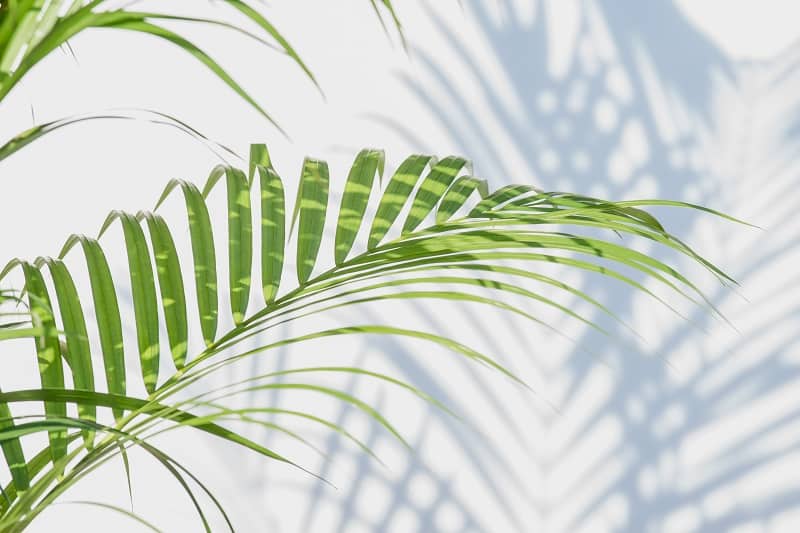
Areca palms, with the scientific name Dypsis lutescens, are a flowering species of the family Arecaceae. These palms are native to Madagascar and can grow up to seven feet tall. They are also referred to as golden cane palm, yellow palm and butterfly palm. Healthy specimens can live as long as 10 years, but these plants are also prone to diseases and other issues that may cause them to die if not promptly addressed.
How To Save A Dying Areca Palm Plant
Pull out any decaying or dead fronds.
Remove any brown or yellow-colored fronds from the plant using pruning shears. Make sure you do not rip them off the palm tree manually; rather cut them off at the trunk. Dispose of the dead leaves in the garbage.
Transfer or repot the dying Areca palm.
Closely inspect the roots of your dying plant by removing most of the dirt from the roots so that only the root ball remains. If it has root rot, cut away the affected roots, leaving just the healthy ones, and replace the soil with fresh potting mix. Dispose of the infected soil and sterilize the pot before reusing it.
Position your palms in a good spot.
Place your dying palms in a location where they can receive ample sunlight. However, if they have brown leaves or burns on the tips of their leaves, it could indicate sunburn. In this case, place them in an area at least eight feet away from direct sunlight, or better yet, expose them only to filtered light.
Maintain the correct temperature.
Dying Areca palms should be closely monitored and the temperature should be kept between 60 to 65 degrees Fahrenheit at night and 75 to 85 degrees Fahrenheit during the day. To monitor the humidity, use a hygrometer for accurate measurement.
Water the plants correctly.
If your palms are dying because of root rot or infected soil, refrain from watering them for at least a week. If it was due to dehydration, on the other hand, water them with at least one to two gallons of water so that the roots become hydrated again. Areca palms cannot tolerate waterlogged soil, so make sure that the pots have drainage holes to avoid stagnant water. Use peat moss or perlite in your topsoil for improved drainage.
Check for pests.
Dying plants that are turning yellow and becoming droopy could be an indication of pest infestation. Check the plants for any presence of pests like spider mites, aphids or scale insects. Treat the plants by spraying insecticidal soap or rubbing the leaves with neem oil.
Provide high-quality fertilizers.
Revive your dying Areca palms by adding high-quality fertilizers to the soil. Just make sure to limit its proximity to the roots; maintain a distance of two inches to avoid the risk of burning the roots.
Possible Reasons Your Areca Palms Are Dying
Due to too much sunlight.
Areca palms are likely to wither and die because of too much exposure to the sun. This rarely happens among indoor plants, but always take precautions and ensure that the palms are not soaking up too much sunlight.
Due to too little sunlight.
Areca palms that have brown fronds are likely to be suffering from insufficient sunlight. Take them out from their shaded spot and place them in an area where they can enjoy the sun for at least a few hours a day.
Due to too much pruning.
Areca palms do not require very much pruning. Cutting or pruning the fronds too often could limit the growth of future fronds. These plants are monocots with a single-seed leaf, and there is a terminal growth bud from which the fronds sprout if the palm has one trunk.
Due to overwatering.
Areca palms also tend to wither and die if they are overwatered. They could develop fungal diseases like root rot and Phytophthora. The stems will become discolored and the leaves will turn brown and die. See to it that you are watering the plants just enough, since too much watering could result in waterlogged soil.
Due to underwatering.
Just as overwatering can kill the plants, not watering them enough could also damage them. The leaves will dry out and eventually fall off the stems.
Due to nutrient deficiency.
Areca palm plants could suffer from frizzle top because of nutrient deficiency. This is a condition where new leaves become distorted, yellowed and frizzled, due to a deficiency of nutrients like manganese. To fix this, use a slow-release fertilizer to nourish your plants with manganese.
Conclusion
Areca palm plants are popular indoor plants because of their appealing foliage. These plants add aesthetic value to your rooms or corporate offices but, like most plants, are also prone to problems and diseases. They could end up dying unless you revive them by optimizing their growing conditions. This includes maintaining the right room temperature, watering them correctly, removing dead foliage and nourishing them with a high-quality fertilizer.
Image: istockphoto.com / lamyai